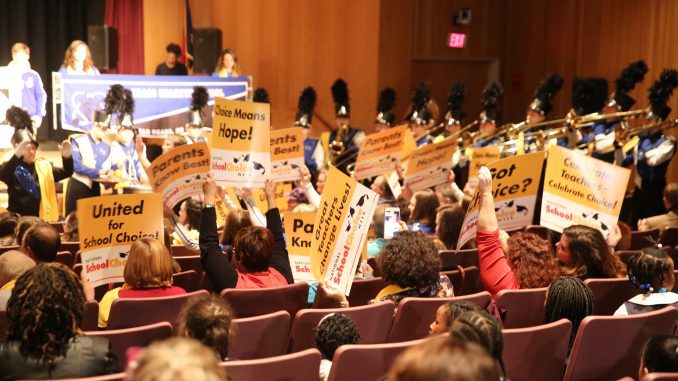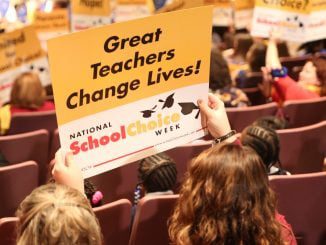
Much has been written about pandemic impacts over the past year as educators and students were pushed to pivot and perform in ways no one had planned. It was, as The New York Times noted, “the most disrupted American school year since World War II.” As stories of learning loss and disengagement accumulate, they serve as stark reminders of the important recovery work ahead for all public schools.
Yet, there’s another story that needs telling, too, especially as we reflect on the road just traveled: How did public charter schools — intended to incubate innovation and ingenuity — navigate the storm and strife of the pandemic? This week, State Board of Education members will find out, as they review North Carolina’s new 2020 Annual Charter Schools Report.
Every year, the charter report, required by statute, provides an opportunity for state leaders to assess the ongoing “educational effectiveness” of charters — evaluating academic progress and emerging best practices, among other things. But this year, the pandemic has provided a unique lens for evaluating charter performance. How have charters fared? Overall, as the report attests, they responded to pandemic disruption with efficacy and agility, mitigating student learning loss and meeting student needs.
Consider academics. The charter report cites statistics on at-risk students, presented in March to the N.C. Senate Education Policy Committee by Department of Public Instruction leaders. Culled from fall 2020 end-of-course exams, test data revealed a sobering snapshot of pandemic learning loss: 22.91% of students in traditional district schools were deemed “at-risk for academic failure” and were “not successfully progressing through grade level promotion.”
At public charter schools, test data told a different story: just 9.23% of North Carolina’s charter students were deemed at-risk. In ninth grade, the most tumultuous year for academics across the board, 27.5% of students in traditional district schools were at-risk for academic failure. At public charter schools, that figure was 12.55%. Such contrasts compel a closer study.
What was happening at charter schools? Survey data from charter schools, included in the new report, shed some light. Charters leveraged myriad strategies to ensure continuity in student learning. Ninety-eight percent distributed devices to students. Schools utilized an array of strategies to bridge connectivity gaps — providing students with phones equipped with Wi-Fi or directing funds to parents to pay for mobile hotspots on phones. Other schools provided community-based Wi-Fi access. Once public schools were authorized to open their doors for K-5 learning, charters were among the first public schools to do so. Charter ingenuity included flexibility: At KIPP Halifax College Preparatory in Halifax, students were offered virtual classes in the evening. Student participation “increased significantly,” the charter report notes.
How have charters fared? Overall, as the report attests, they responded to pandemic disruption with efficacy and agility, mitigating student learning loss and meeting student needs.
Charter teachers worked to ensure continuity and efficacy in communication, utilizing an array of tools strategies, and platforms. Nine out of 10 charter teachers combined synchronous and asynchronous lessons, the charter report notes. Eight in 10 used video conferencing and written comments to give students feedback, as well as communicating with parents via remote and face-to-face conferences. Seven in 10 charter teachers provided tutoring and targeted help for students.
Charter teachers also kept close tabs on student well-being. At almost all charters — 97% — teachers conducted regular check-ins with students on academic and personal issues. Nearly two-thirds of charter teachers conducted consistent social-emotional check-ins with their students as well, the charter report found. Such comprehensive oversight, while demanding for teachers, undoubtedly helped keep more students on track during the protracted time of remote learning.
Families clearly like what they see. Even prior to the pandemic, families were flocking to charter schools. With their myriad missions and offerings — language immersion, character education, performing arts curricula, service learning, STEM/STEAM programs, Montessori focus, and more — charter schools hold growing appeal. The state’s 200 public charter schools now serve more than 126,000 students, an increase from 117,000 students in 2019-20. Seventy-eight percent of charter schools report waitlists, totaling 76,000 students.
As the pandemic progressed, charter enrollments increased at every grade level in 2020-21, even as traditional district enrollment declined. Some charter schools stretched to meet family demand in extraordinary ways. This year, 10 N.C. charter schools overenrolled a total of 401 students — doing so without concurrent state funding. The needs of the student were of utmost importance to these schools.
Now, schools have opened — we hope, for good. But the lessons from this year of disrupted learning remain. As more data and stories come to light, we ought to celebrate and scale successes wherever we can. Our students are counting on it.
Lindalyn Kakadelis is executive director of the North Carolina Coalition for Charter Schools.



